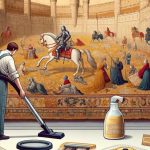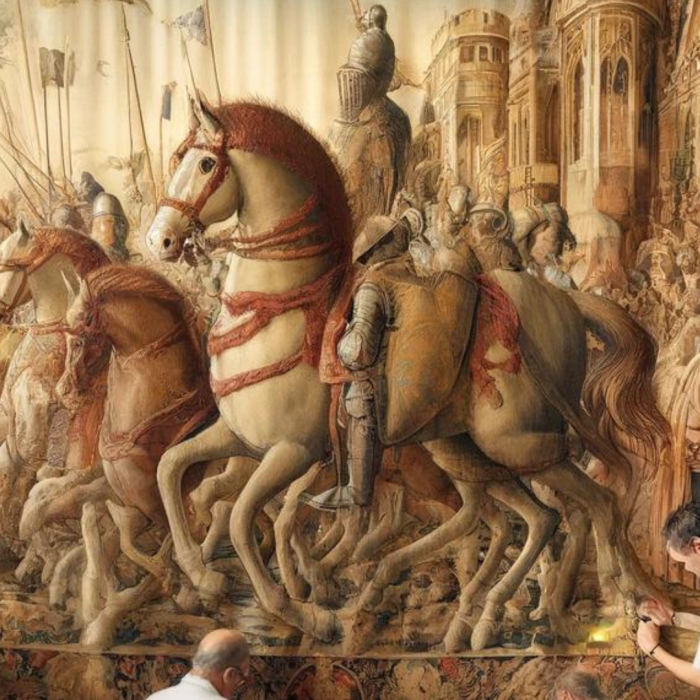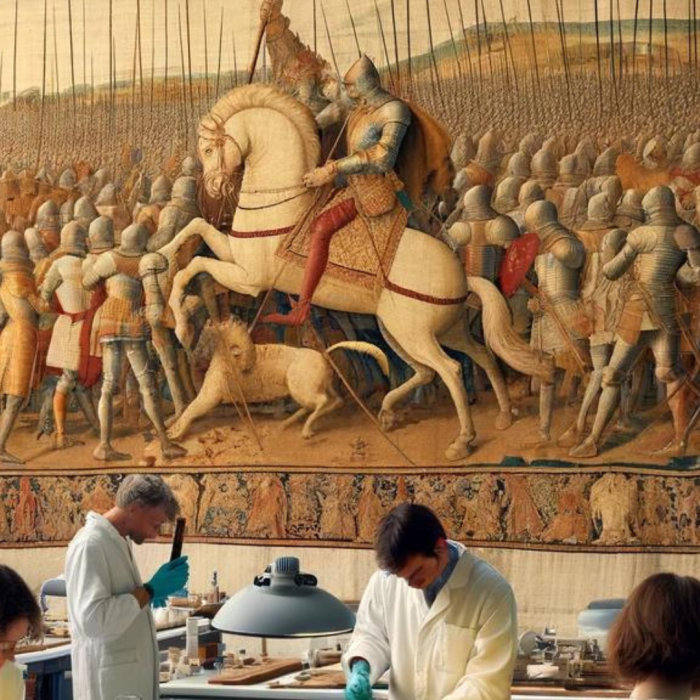The Role of Tapestries in Medieval Times
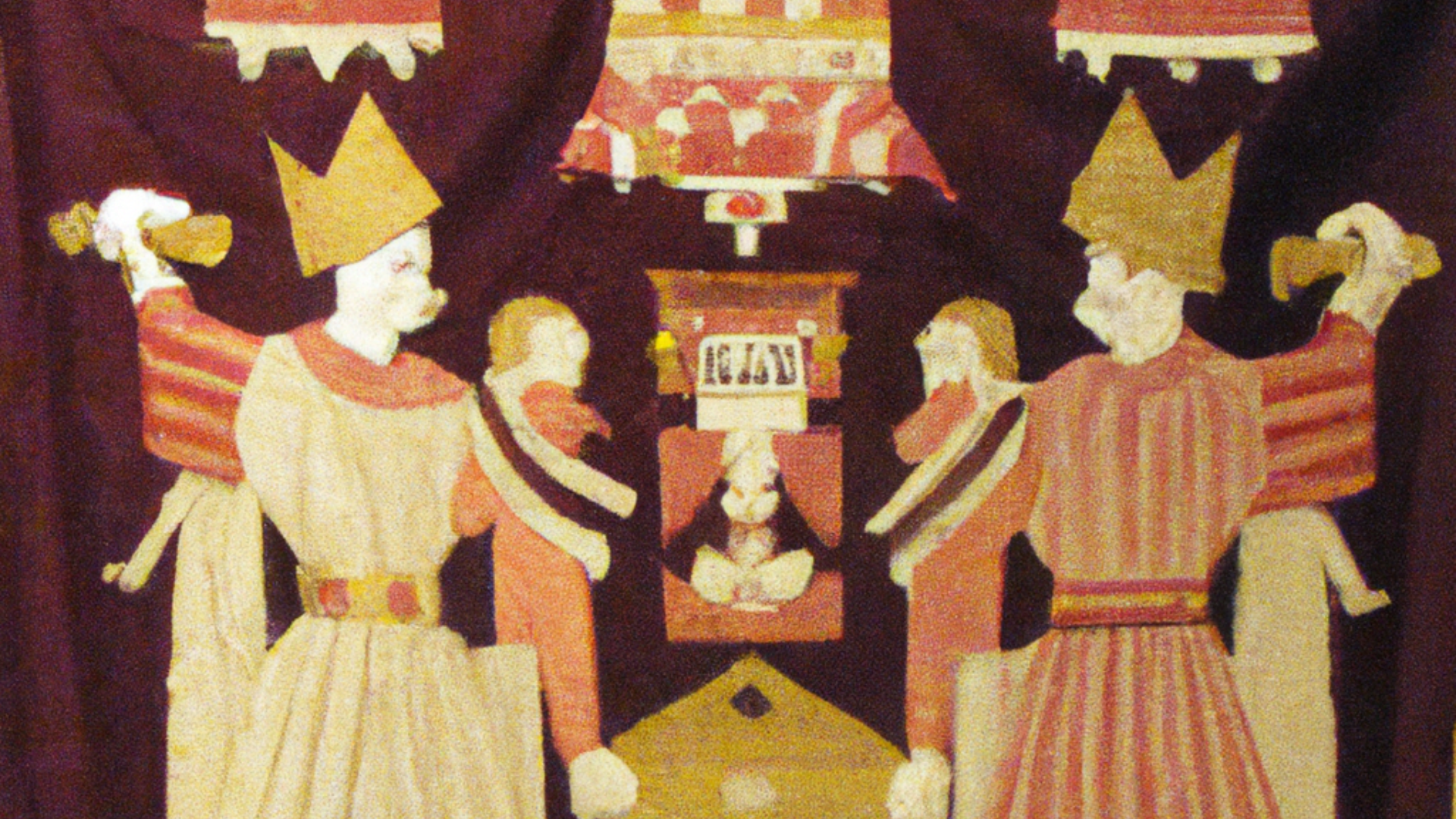
Brief history of tapestries
Tapestries played a crucial role in medieval times, serving as both decorative and functional elements in the lives of people during this era. These woven hangings were not only intricate works of art but also served practical purposes such as insulation and storytelling. The history of tapestries in the medieval period is rich with significance, with a notable focus on themes like the unicorn, wool production, skilled weavers, and the art of painting with threads.
Medieval tapestries were highly valued for their ability to provide warmth in drafty stone castles and halls. They were used to cover walls to add both color and insulation, helping to keep the cold at bay. Beyond their functional use, tapestries were also status symbols, displaying the wealth and taste of their owners.
The process of creating these tapestries was intricate and time-consuming. Skilled weavers, often working in specialized workshops, meticulously wove scenes and images into large pieces of cloth. One of the most famous themes of medieval tapestries is the unicorn, symbolizing purity and grace. These unicorn tapestries are not only beautiful examples of medieval art but also provide insight into the symbolism and beliefs of the time.
Wool was the primary material used in creating these tapestries. Wool was abundant in medieval Europe, making it a practical choice for weaving. The use of wool also meant that tapestries were not only decorative but also served as a form of insulation, particularly in cold stone castles.
In addition to the practical and decorative aspects, tapestries were also used as a form of storytelling. Before the widespread availability of printed materials, tapestries served as visual narratives, depicting scenes from history, mythology, or religious stories. They were a way to communicate stories and ideas to a largely illiterate population.
The role of tapestries in medieval times was therefore multi-faceted. From their practical use in providing warmth and insulation to their symbolic depiction of themes like the unicorn, tapestries were woven into the fabric of medieval life. Skilled weavers brought these scenes to life, creating masterpieces that not only adorned walls but also served as important cultural and historical artifacts. Today, medieval tapestries continue to captivate with their beauty and the stories they tell from a bygone era.
The Art of Tapestry in Medieval Europe
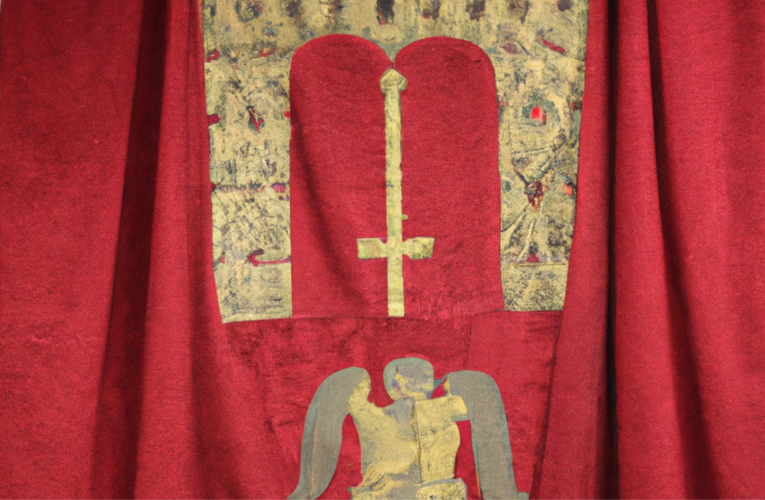
In medieval Europe, tapestries held immense value as artworks, serving not only as decorative pieces but also as historical records. These intricate woven hangings played a crucial role in depicting stories and events, often serving as visual narratives of significant historical moments or religious tales.
Tapestries were woven using various materials, including wool, and were created by skilled weavers. The process of weaving tapestries was a meticulous art form, often requiring months or even years to complete a single piece. This level of dedication and craftsmanship elevated tapestries to the status of prized possessions among medieval nobility and royalty.
These magnificent hangings were not just static artworks; they were dynamic storytellers. The role of tapestries in medieval times went beyond mere decoration; they were used to convey messages and preserve history. Scenes of battles, religious stories, and courtly life were common themes woven into these artworks, offering a glimpse into the cultural and social fabric of the time.
The term “unicorn” is often associated with medieval tapestries, as these mythical creatures frequently appeared in these works. The unicorn tapestries, such as the famous “The Hunt of the Unicorn,” are iconic examples of medieval tapestry artistry, blending elements of fantasy with the skilled weaving techniques of the time.
In addition to their role as narrative tools, tapestries served practical purposes in medieval Europe. They were used to insulate and decorate cold stone walls in castles and churches, adding both warmth and beauty to these spaces.
Today, the legacy of medieval tapestries continues to fascinate art enthusiasts and historians alike. Studying these woven masterpieces provides insights into medieval life, artistry, and the enduring allure of these intricate and meaningful creations.
Woven Masterpieces: The Making of Medieval Tapestries
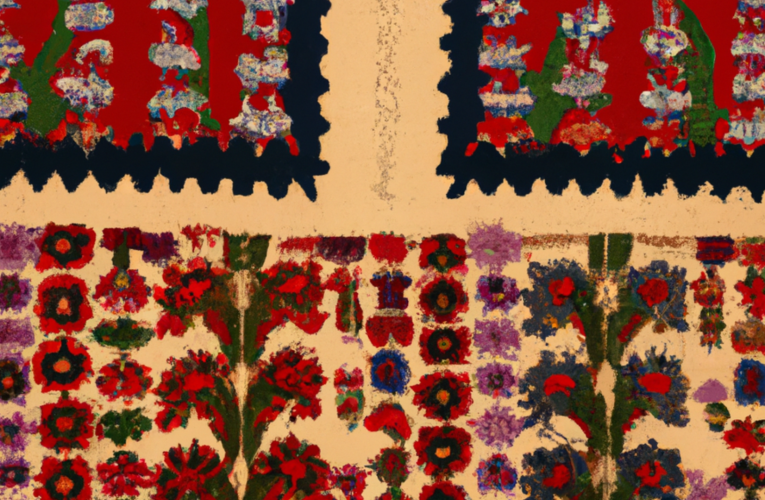
Process of creating tapestries: from wool to woven art
In the medieval times, tapestries played a vital role as not just decorative hangings but also as historical records and storytelling mediums. These woven masterpieces, often depicting intricate scenes and motifs, were crafted through a meticulous process that transformed raw wool into stunning works of art.
The process of creating medieval tapestries began with the careful selection of wool, a material prized for its durability and vibrant color absorption. Skilled weavers, highly esteemed in medieval society, would then set to work, translating paintings and designs into woven form.
Each tapestry was a laborious endeavor, with weavers meticulously interlacing threads to create detailed images. The use of vibrant colors, often made from natural dyes, brought these scenes to life. Themes varied widely, from epic battles to mythical creatures like the iconic unicorn, each tapestry telling a unique story.
In medieval times, tapestries served not only as decorative elements but also as insulation for cold stone walls in castles and grand halls. They also served as portable decor, able to be moved to different locations as needed.
These tapestries were not just art; they were symbols of wealth and power, often commissioned by royalty and nobility to display their prestige. The intricate process of creating these woven masterpieces, from the careful selection of wool to the skilled hands of weavers, resulted in enduring works of art that continue to captivate and inspire today.
Importance of weavers and their guilds
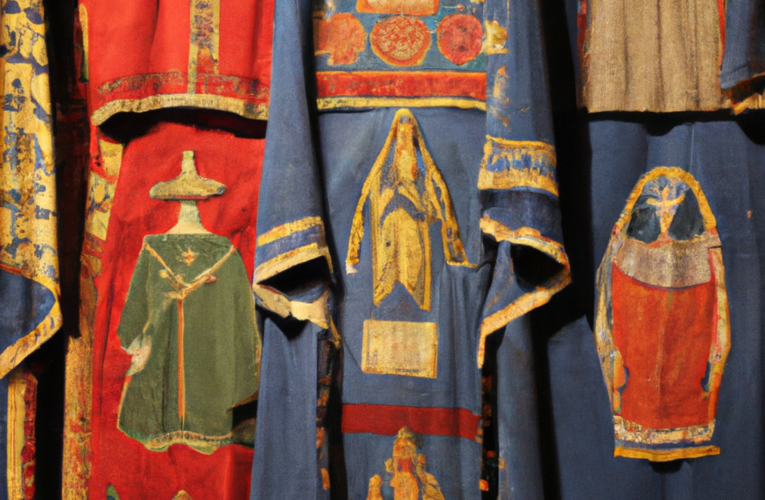
During the Medieval period, tapestries were not just decorative pieces but essential components of visual storytelling, offering a glimpse into the lives, beliefs, and aspirations of the time. “Woven Masterpieces: The Making of Medieval Tapestries” delves into the intricate world of tapestry creation, shedding light on the importance of weavers and their guilds during this era.
In medieval times, tapestries held significant roles beyond mere adornment. They served as valuable historical documents, depicting scenes of battles, religious narratives, and daily life. The painstaking process of weaving these tapestries was entrusted to skilled artisans who were members of weavers’ guilds, highly esteemed for their expertise in this art form.
Tapestries were woven using techniques passed down through generations, often using wool as the primary material. The wool was carefully dyed to achieve vibrant hues, adding depth to the intricate designs. Each tapestry was a laborious creation, with weavers dedicating months, if not years, to complete a single piece.
One of the most famous examples of medieval tapestries is the series of “The Hunt of the Unicorn.” These tapestries, now housed in various museums, illustrate the pursuit of a mystical creature and are celebrated for their detailed portrayal of medieval life and beliefs.
The weavers’ guilds played a crucial role in the production of tapestries, ensuring quality and preserving the secrets of their craft. These guilds provided training to apprentices, fostering the next generation of skilled artisans.
In medieval times, tapestries were not only hung for their aesthetic value but also for their practical uses. They served as insulation in drafty castles and halls, providing warmth while also displaying the wealth and status of their owners. Additionally, tapestries were portable, making them ideal for conveying stories and decorating spaces for important events.
Explores how these woven artworks transcended their utilitarian purposes to become symbols of wealth, power, and artistic expression during the medieval era. Through the intricate designs and skilled craftsmanship of these tapestries, we gain insight into the beliefs, values, and narratives that shaped medieval society.
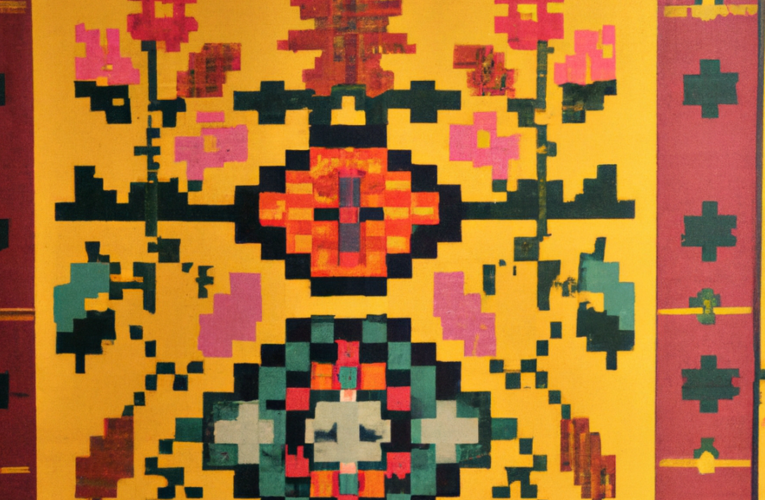
Use of vibrant colors and intricate designs
Woven Masterpieces: The Making of Medieval Tapestries” delves into the captivating world of tapestries during the medieval era, highlighting their significant role in art and culture. In medieval times, tapestries were more than just decorative hangings; they were intricate works of art that told stories, depicted historical events, and adorned the halls of castles and palaces.
Tapestries were woven using a variety of techniques, with weavers skillfully interlacing vibrant colors of wool to create elaborate designs. The use of vibrant colors and intricate designs was not only for aesthetic purposes but also served to convey narratives and symbolism. In the making of these tapestries, weavers painstakingly wove together scenes of battles, courtly life, religious stories, and mythical creatures like the iconic unicorn.
These woven masterpieces were not merely decorations but essential elements of medieval life, providing insulation in drafty castles and serving as status symbols for the nobility. They were also portable, allowing for the display of wealth and taste during travels or important events.
Through these tapestries, we catch a glimpse of medieval life and values, as they often depicted scenes of chivalry, hunting, feasting, and religious devotion. The craftsmanship involved in creating these tapestries was a laborious process, with weavers dedicating months or even years to complete a single piece.
The “Woven Masterpieces: The Making of Medieval Tapestries” exhibit showcases the artistry, skill, and storytelling of these medieval artisans, inviting visitors to appreciate the rich history and cultural significance of tapestries in the medieval era.
Tapestries Beyond Decoration: Their Practical Functions
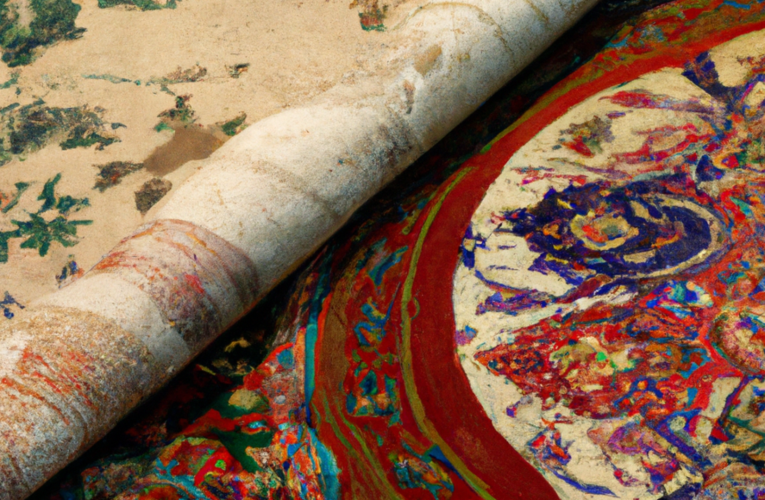
Insulation and warmth in medieval castles
In medieval times, tapestries played a multifaceted role beyond mere decoration, particularly in the context of insulation and warmth within the confines of a castle. These woven hangings were not only prized for their intricate designs and vibrant paintings but also for their practical functions, especially in the chilly stone interiors of medieval castles.
The Role of Tapestries in Medieval Times
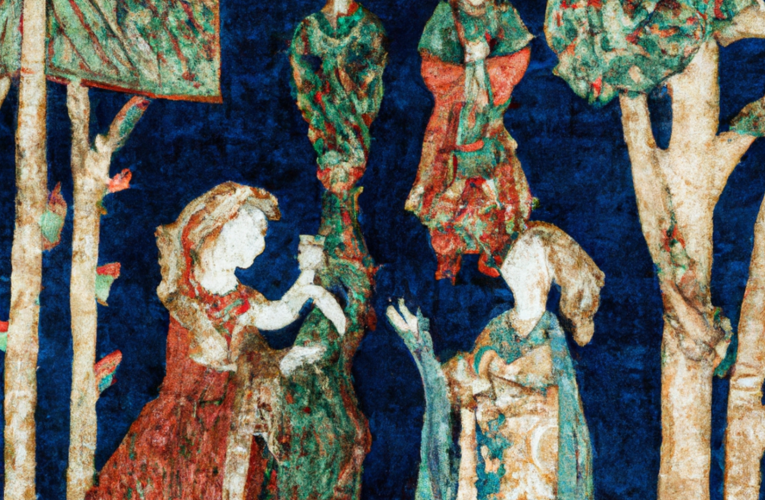
Tapestries, known for their exquisite craftsmanship and use of materials such as wool, were a staple in the households of the medieval elite. Their practical functions were deeply intertwined with their aesthetic appeal.
Insulation and Warmth
In the often drafty and cold stone castles of medieval Europe, tapestries served as effective insulators. The thick woven wool provided a layer of protection against the chill, helping to retain heat within living spaces. Unlike the bare stone walls that could absorb and radiate cold, tapestries created a barrier that trapped warmth, making rooms more comfortable for inhabitants.
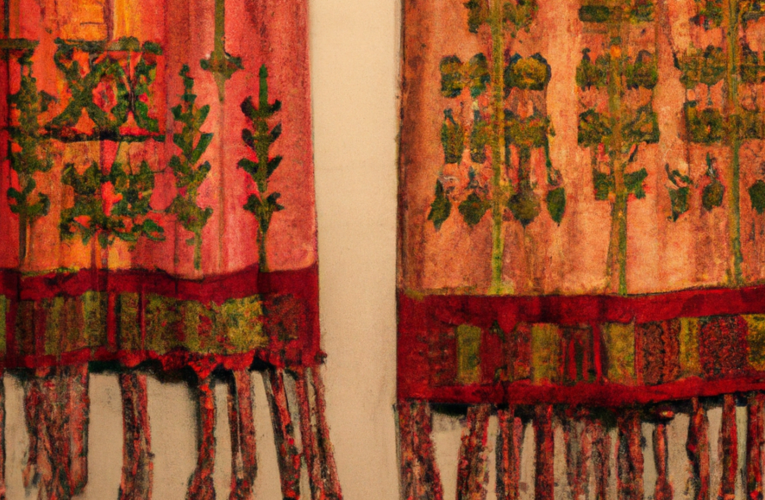
Weatherproofing
Beyond insulation, tapestries also acted as a form of weatherproofing. Castles were susceptible to drafts and moisture, especially in the colder months. The dense weave of tapestries helped to block drafts from windows and doors, keeping interiors more temperate. This was particularly crucial in large halls and chambers where maintaining a comfortable temperature was a constant challenge.
Status and Prestige
Additionally, tapestries were symbols of wealth, status, and prestige. The process of weaving tapestries was labor-intensive and time-consuming, often requiring skilled weavers who spent months or even years creating a single piece. The rich and intricate designs, such as the popular theme of the unicorn, not only added beauty to a space but also showcased the owner’s affluence and taste.
Artistic and Narrative Elements
Furthermore, tapestries were not merely static decorations but dynamic pieces of art that often told stories or depicted scenes from mythology, history, or religious narratives. Beyond their practical functions, they served as conversation pieces, with viewers interpreting the woven stories and symbols.
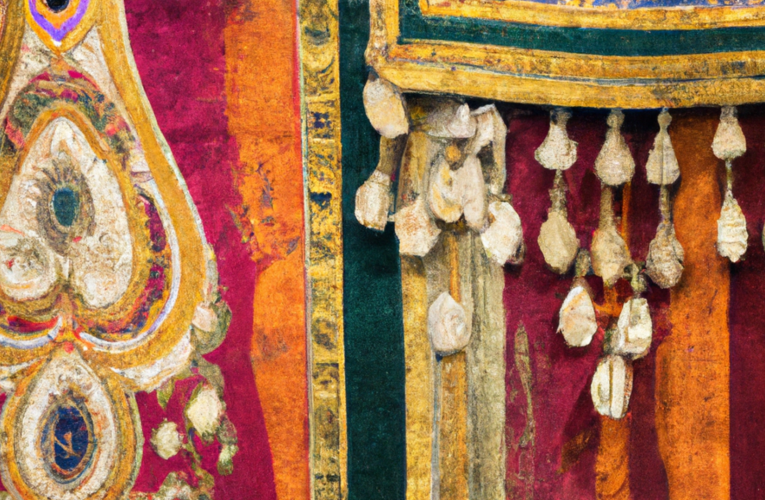
The Craft of Tapestry Weaving
The creation of tapestries involved a specialized craft that required skilled artisans. Weavers meticulously worked on large looms, translating intricate designs into woven masterpieces. These artisans played a crucial role in medieval society, with their skills highly sought after by nobility and royalty.
Stories Unraveled: Famous Tapestries of the Medieval Era
“Stories Unraveled: Famous Tapestries of the Medieval Era” explores the intricate world of medieval tapestries, shedding light on their historical significance and artistic brilliance. In the medieval period, tapestries played a pivotal role as not just decorative hangings but also as important storytelling mediums. Woven with meticulous detail and often using wool, these tapestries depicted scenes from religious stories, epic battles, and everyday life, offering a glimpse into the culture and values of the time.
Tapestries were more than mere decorations; they served as functional pieces, providing insulation for drafty stone walls in castles and manor houses. The process of creating these tapestries was a laborious one, involving skilled weavers who meticulously crafted each piece, sometimes taking years to complete a single work. The result was a masterpiece that not only adorned the walls but also told tales through intricate designs and vibrant colors.
Among the most famous medieval tapestries are “The Unicorn Tapestries,” a series of seven woven hangings that depict the hunt for a unicorn. These tapestries are renowned for their detailed portrayal of medieval life, showcasing hunting scenes, lush landscapes, and mythical creatures.
In medieval times, tapestries were also used as a form of portable art, often carried by nobles as they traveled. These woven paintings served not only as symbols of wealth and status but also as practical items that could be rolled up and transported from place to place.
From the skilled weavers who brought these scenes to life to the enduring legacy of these magnificent hangings, medieval tapestries continue to fascinate and inspire, offering a window into the rich history and artistry of the era.
The Legacy of Medieval Tapestries
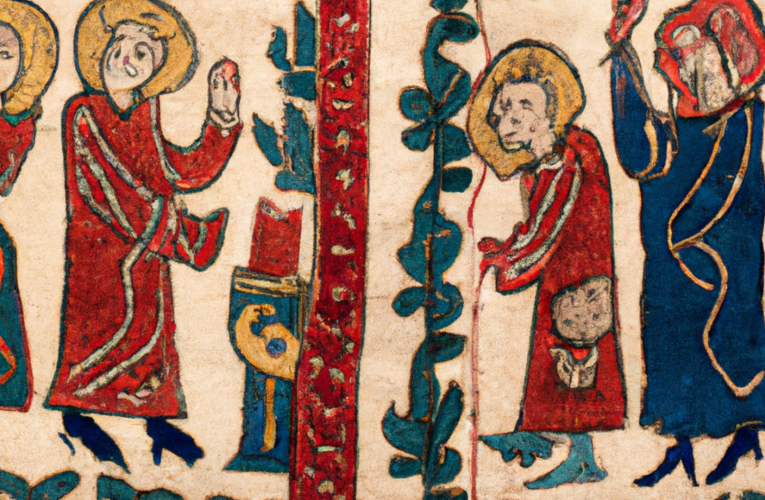
Medieval tapestries hold a rich legacy, serving as captivating windows into the past. In medieval times, these woven hangings played a pivotal role, offering more than just decorative appeal. Crafted meticulously by skilled weavers using wool, these tapestries were not mere adornments but also intricate narratives, often depicting scenes from daily life, historical events, or religious stories.
The art of tapestry-making in medieval Europe was a revered skill, with weavers dedicating years to complete these masterpieces. These tapestries were not simply flat paintings; they brought depth and texture to the stories they depicted, making them come alive in a way that paintings could not.
One of the most famous series of medieval tapestries is “The Hunt of the Unicorn,” which exemplifies the artistry and storytelling prowess of these creations. This series is a masterpiece in its own right, portraying the hunt for a mythical creature in a lush, detailed landscape. The symbolism and allegory in these tapestries added layers of meaning, often reflecting the values and beliefs of the time.
Beyond their aesthetic appeal, medieval tapestries served practical purposes. They adorned the cold stone walls of castles and palaces, not only providing insulation but also showcasing the wealth and status of the owner. Tapestries were also used as portable decorations, allowing nobles to bring their lavish surroundings with them as they traveled.
In a time when books were rare and literacy limited, tapestries served as visual storytelling devices, educating viewers on historical events or moral lessons. They were also used to commemorate important occasions or as diplomatic gifts between kingdoms.
The legacy of medieval tapestries endures, with many surviving examples preserved in museums and collections around the world. Each thread woven by skilled hands tells a tale of the past, offering insights into the art, culture, and society of medieval Europe. Today, these tapestries continue to captivate audiences, reminding us of the intricate craftsmanship and storytelling prowess of the weavers who brought these works of art to life.
In conclusion, for those intrigued by the fascinating world of medieval tapestries, I urge you to explore museums or exhibitions that showcase these historical marvels. Delve into the intricate world of tapestries, which played a significant role in medieval times, serving as both decorative hangings and narrative pieces. These woven masterpieces, often depicting scenes of epic tales or everyday life, offer a glimpse into the artistry and craftsmanship of the past. From the legendary unicorn tapestries to the meticulous work of weavers using wool and vibrant paints, these exhibitions provide a rich understanding of the cultural and artistic significance of tapestries in history. So, whether you’re a history enthusiast or simply curious about this ancient art form, immerse yourself in the world of medieval tapestries and discover the stories they have to tell.

